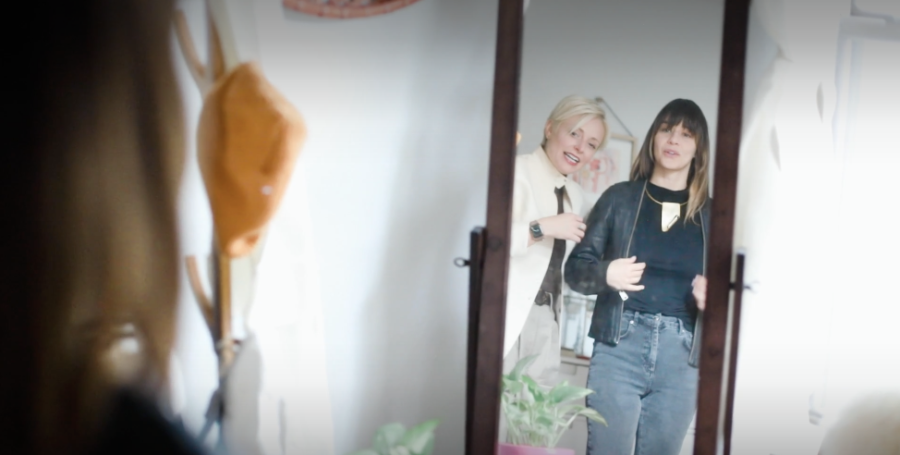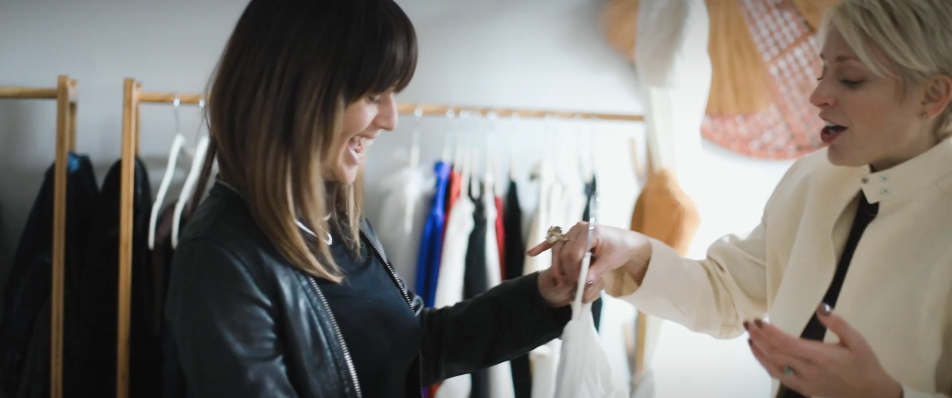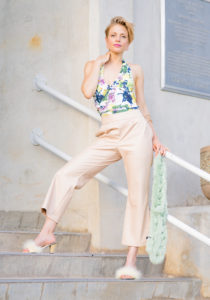I use an intake survey every time I take on a new styling client. Without giving away all the good questions, it goes a little something like this…
The body track: What’s your body type or do you know it? What challenges do you encounter getting dressed or with your image?
The goals track: What’s a non-curated day like for you? Do you have an aspirational style stan? (Mine is the cast of Insecure S5 when they reached peak cool.) How would you like to dress if you haven’t reached your own version of peak cool?
The financials track: How much dollars, dinero, dough do you plan to devote to your sustainable wardrobe goals? (This doesn’t have to mean new clothes BTW.) How long do you think it will take you to achieve your goals with the funds you’ve got?
The ethics track: What values are most important to you when it comes to your clothes? This could be human rights and labor, climate, women’s empowerment, supporting BIPOC brands, and more. I intentionally force clients to rank answers to this question because it’s too challenging, especially at the outset, to take on multiple priorities.
The conflict between a sustainable wardrobe and price
While studies show that people are willing to pay more for sustainable goods, I see the most divergence between financials and ethics. The clients I serve know some investment will be involved in updating their wardrobes, but they don’t want to shell out an unreasonable amount of money on the endeavor.
Today, with increased access to secondhand and resale, there are even more ways to balance real style goals and affordability—with the more real issue of planetary brink. (But really, that planet brink stuff is a systemic issue we won’t solve by better shopping. It’s about regulations and a massive overhaul of the fashion industry’s culture, which is a story for another post.)
Knowing not everyone has the time or money for a personal stylist, I wanted to share my cut-to-the-chase insights to help you create a sustainable wardrobe, affordably. Before the tips, I’ll leave you with a final disclaimer: With this approach, your wardrobe goals won’t happen at breakneck speed. More like turn-your-neck-gently-and-breath-into-the-stretch speed. Here they are:
Choose interesting patterns and cuts over fabrics and colors
Patterns are how clothes are laid out. Cuts are the style or shape of a garment, i.e. how it lays on you. Patterns and cuts are part of the design phase, and thus, take more time, effort, and innovation at inception. Today, many “designers” and brands use pre-fabricated or standard patterns and give them the allure of newness by using bold fabrics or colors. This is why you see so much sameness in mass-produced clothing. We get the same shirt, circulating in a thousand prints and colors.
You’re more likely to get a distinct look (and style) if you choose interesting patterns created by design houses. These styles may be pricer but are often constructed better. And the fact that you had to work a little hard to find them, means you’ll probably love and wear them longer.
When choosing new patterns, be sure to do your research on the cuts that fit your body best (e.g. plug neckline, bodycon, baggy, etc.) and always, always try things on before you buy, especially if haven’t worn the brand before.
Pick your signature shapes
This calls back the cuts mentioned above. There’s no perfect range but I advise clients to have 2-3 top styles (e.g. v-neck or wrap), 3-5 bottom styles (e.g. skinny jeans or maxi skirts), and 1-2 dress and outwear styles (e.g. a-line or trench coat) that work for them.
To figure this out, try things on and get honest feedback from your friends or in-store stylists, search your body type on YouTube to get some style ideas. This will also help you narrow your online shopping with keywords and help you minimize your returns. You can, of course, always break these rules if you find interesting cuts that speak to you. The goal here is to build your foundation and experiment until your heart’s content from there.

Chose core and complimentary pieces and colors
I explain this concept in this video, but in a nutshell, “cores” are the pieces you wear the most and make up the building blocks of your outfits. Depending on your needs, cores should make up 60-70% of your wardrobe. “Compliments,” on the other hand, are where you can play. These are your trendier, more experimental pieces. They can make up 30-40% of your wardrobe. Since they can be more transitory, I recommend getting them at secondhand stores or renting if you can.
As for colors, your cores don’t have to be neutral, but they should be in colors that are flattering based on your color analysis (get into that here). I recommend choosing 3-4 core colors and 1-3 complementary colors to make up your wardrobe palette. As you shop, if it’s not in your palette or it doesn’t match with at least 3 things you already own, don’t buy it.
Create a living closet
Every time the weather (or your mood) changes, I recommend curating a capsule collection of what you’re actively wearing. In Texas, I do this about 3 times a year. It could revolve around a color mood, a visual aesthetic, or even a single piece of clothing that inspires you. Whatever it is, hang enough clothes for 2-4 weeks together in a separate area of your closet or a garment rack.
You can still tap into your other wardrobe to mix things up and extend the life of your living closet, this shouldn’t feel restrictive. Rather, it should make daily dressing easier and give you the sense that you’re shopping in your “other” closet, making those clothes feel fresh again. Sayonara, over-shopping.
Invest in the right things
When you do shop, spend more money on quality pieces that are repairable and not dependent on size as much if your body changes. This includes bags, shoes, coats, wrap dresses, and tops in styles you’ll enjoy outside of trend cycles. You should also consider color when purchasing for longevity, as light colors and white can easily turn into napkins while you’re being a human. There’s a huge critique that sustainable fashion is more expensive than fast fashion, but if you follow this method, shop more secondhand, and think about cost-per-wear, this way of shopping can save you money over time. If you need some recommendations on ethical brands, check out my shopping page.
Want more tips tailored to you? Book a free style consult with me.
Do you have other tips for creating a more sustainable wardrobe?




